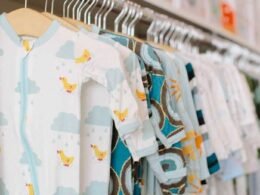In recent years, more people have begun exploring non-surgical treatment for hair loss. While traditional hair transplants are still widely used, many individuals are seeking less invasive, more natural alternatives. One of the most promising solutions is PRF hair restoration (Platelet-Rich Fibrin), a regenerative therapy that harnesses the body’s own healing mechanisms.
For those in the early to moderate stages of hair thinning, PRF offers a safer and more approachable path to regrowth—without the surgery. If you’re considering a natural and effective alternative to transplants, explore PRF hair loss clinics in Brisbane and Gold Coast that provide expert care using regenerative techniques tailored to your scalp’s needs.
In this article, we explore five key reasons people are choosing PRF over hair transplant procedures, and how it compares in terms of safety, results, and recovery.
Understanding PRF: What It Is and How It Works
PRF is a natural concentrate derived from your own blood. Unlike synthetic treatments or medications, PRF is rich in platelets, white blood cells, and stem cells, which are responsible for tissue regeneration and healing. It is prepared by drawing a small amount of blood, spinning it in a centrifuge at a low speed (without anticoagulants), and extracting a fibrin matrix rich in growth factors.
When injected into targeted areas of the scalp, PRF gradually releases growth factors that stimulate dormant follicles, improve circulation, and reduce inflammation. Over time, this enhances scalp health and encourages natural hair regrowth.
Unlike PRP (Platelet-Rich Plasma), PRF retains more regenerative cells and offers a slower, sustained release of growth factors for longer-lasting effects.
1. No Surgery, No Scalp Incisions
Perhaps the most significant reason people choose PRF is that it is non-invasive. Traditional hair transplants involve surgery, where healthy follicles are surgically removed from one part of the scalp and transplanted to thinning areas. This process requires incisions, stitches, and carries risks such as scarring, infection, or poor graft survival.
PRF, on the other hand, is completely injection-based. There are no cuts, stitches, or surgical recovery. For individuals who are hesitant about undergoing surgery, PRF offers a more comfortable, low-risk solution.
2. Faster Recovery and Minimal Downtime
Hair transplants often involve a recovery period that includes swelling, tenderness, crust formation, and restricted physical activity for several days or weeks. The healing process varies, and the final results can take up to 12 months to fully develop.
With PRF, patients can return to their daily routine almost immediately. The most common side effects are mild redness or slight sensitivity at the injection sites, which subside within 24–48 hours. There is no need for bandages, medication, or time off work, making it ideal for busy individuals seeking quick, effective treatment.
3. Natural and Biocompatible
Because PRF is made entirely from your own blood and processed without additives or chemicals, it is considered highly biocompatible. This eliminates the risk of allergic reactions or rejection. In contrast, a hair transplant is a surgical intervention that manipulates the scalp and involves the physical relocation of follicles, which may not always heal uniformly.
The regenerative factors in PRF promote holistic healing, enhancing not just hair density but overall scalp health. It works with your body, not against it.
4. Cost-Effective and Flexible
Hair transplant procedures can be expensive, often costing thousands of dollars depending on the number of grafts required. Additionally, not all transplant sessions are successful, and some individuals may need repeat procedures to maintain density.
PRF is typically more affordable, especially when administered as a series of sessions. It offers flexibility—patients can start with a few treatments and continue based on progress. It is also an excellent option for those not yet ready to invest in surgery or who are looking to delay more invasive measures.
For early-stage hair loss, PRF is often sufficient to strengthen follicles and slow further thinning without the financial and physical toll of surgery.
5. Ideal for Early Intervention and Maintenance
Hair transplants are best suited for individuals with advanced hair loss and sufficient donor hair. However, for those who are just beginning to notice thinning at the crown, temples, or hairline, PRF offers a way to intervene early.
By stimulating weaker follicles before they become inactive, PRF helps preserve existing hair and improve thickness. It can also be used as a maintenance tool after a hair transplant, enhancing overall results and reducing the likelihood of further loss.
As part of a proactive treatment plan, PRF supports both short- and long-term hair health.
Choosing the Right Approach
While hair transplants remain a viable option for many, the growing appeal of non-surgical therapies like PRF reflects a shift toward safer, more holistic solutions. The choice ultimately depends on the individual’s hair loss stage, lifestyle, and treatment goals.
It is recommended that you start at a trustworthy hair loss clinic like Cosmed HairSkin Solutions that offers advanced scalp analysis and expert consultation to determine whether PRF, PRP, or other non-surgical solutions are right for you.
If you’re exploring alternatives to hair transplant surgery, PRF may be the regenerative breakthrough your scalp has been waiting for.
Conclusion
PRF hair restoration is transforming the way we approach hair loss. With its natural healing properties, minimal downtime, and suitability for early-stage intervention, it provides a compelling option for those seeking results without surgery. Whether you’re new to hair restoration or looking to maintain your current hair health, PRF offers a personalised, evidence-based path forward.
Start your journey today with non-surgical treatment for hair loss that’s rooted in science and guided by care.










